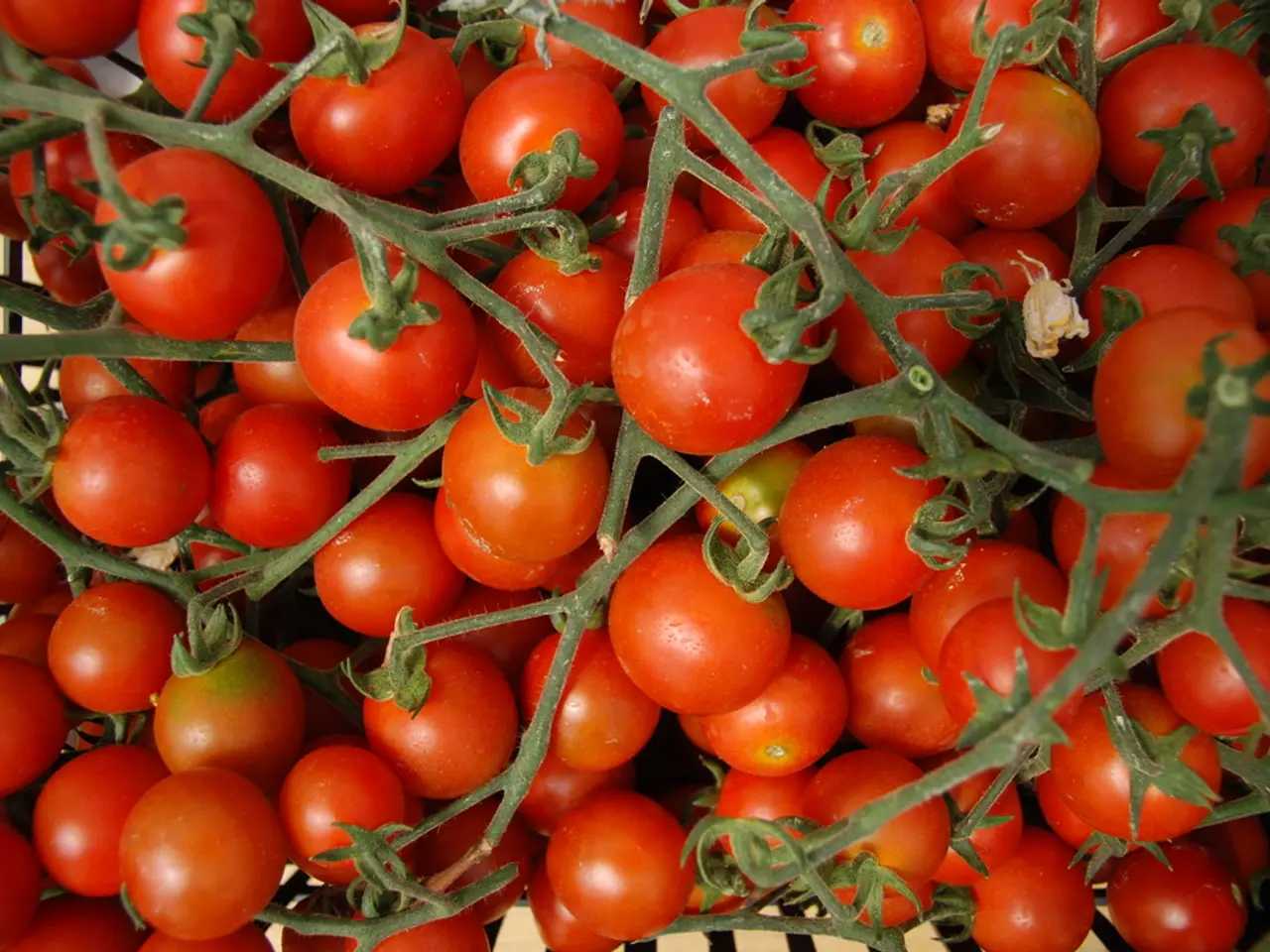August Tomato Tips: Accelerating Ripeness and End-of-Season Preparation Strategies
Accelerating Tomato Ripening in August: A Guide for Gardeners
As August arrives, gardeners can take several steps to speed up the ripening of their tomatoes. Here's a guide to help you make the most of your late summer harvest.
1. Reflecting Light and Warmth
Using aluminum foil under tomato plants can reflect sunlight and warmth back onto the fruit, increasing the production of ethylene, the natural hormone responsible for ripening. This method is particularly effective for tall (indeterminate) tomato varieties. However, care should be taken to avoid overheating the plants.
2. Trapping Ethylene Gas
Placing ethylene-producing fruits like apples or bananas near tomato plants, or loosely covering tomato clusters with plastic bags (with slits for ventilation) for a day or two, can boost ethylene gas and stimulate ripening. As with the aluminum foil method, it's important to avoid overheating when using plastic bags.
3. Strategic Pruning
Removing new flowers and small immature fruits about six weeks before the first frost can redirect the plant’s energy to ripening existing tomatoes faster. However, care should be taken to avoid damaging the stems or dislodging the flowers.
4. Balanced Fertilization and Watering
Avoiding excess nitrogen fertilization and overwatering can help promote ripening. Light watering and balanced fertilization are recommended.
5. Maintaining Temperature
Maintaining warm, but not overly hot temperatures, is crucial. Extreme heat can halt ripening despite otherwise good conditions.
Preparing for Harvest
In early August, gardeners prepare tomatoes for harvest using various agricultural techniques. Supporting the plants with sturdy, non-damaging structures can prevent contact between the fruits and the wet soil. Gently turning tomato clusters allows the sun to evenly heat each tomato, speeding up reddening and improving taste.
Removing lower yellowed, damaged, or earth-touching leaves from the tomato plant reduces the risk of fungal diseases like late blight and improves air circulation and sunlight access to lower clusters. The earlier the top of the plant is pinched off, the more effective it is in speeding up tomato ripening. Removing suckers, especially those located at the bottom of the plant, can also help speed up fruit development.
Caution in Cold Weather
Such methods should be used with caution, mainly in cold weather when tomatoes are changing color slowly. A more radical method of stimulating ripening is creating controlled stress for the plant, such as a gentle longitudinal cut on the stem or lightly damaging the root system. However, these methods should be used sparingly and only when necessary.
By following these simple rules, gardeners can significantly increase their yield and improve tomato quality, minimizing losses from diseases and unfavorable conditions.
In the course of preparing for harvest, gardeners may opt to enhance the home-and-garden lifestyle by implementing methods like placing plastic bags loosely over tomato clusters (with slits for ventilation), which traps ethylene gas and stimulates ripening. Furthermore, when tending to their home-and-garden, gardeners can elevate their gardening skills by cultivating a lifestyle that involves carefully pruning and maintaining balanced fertilization and watering in their home-and-garden, thus promoting the ripening of their tomatoes.






